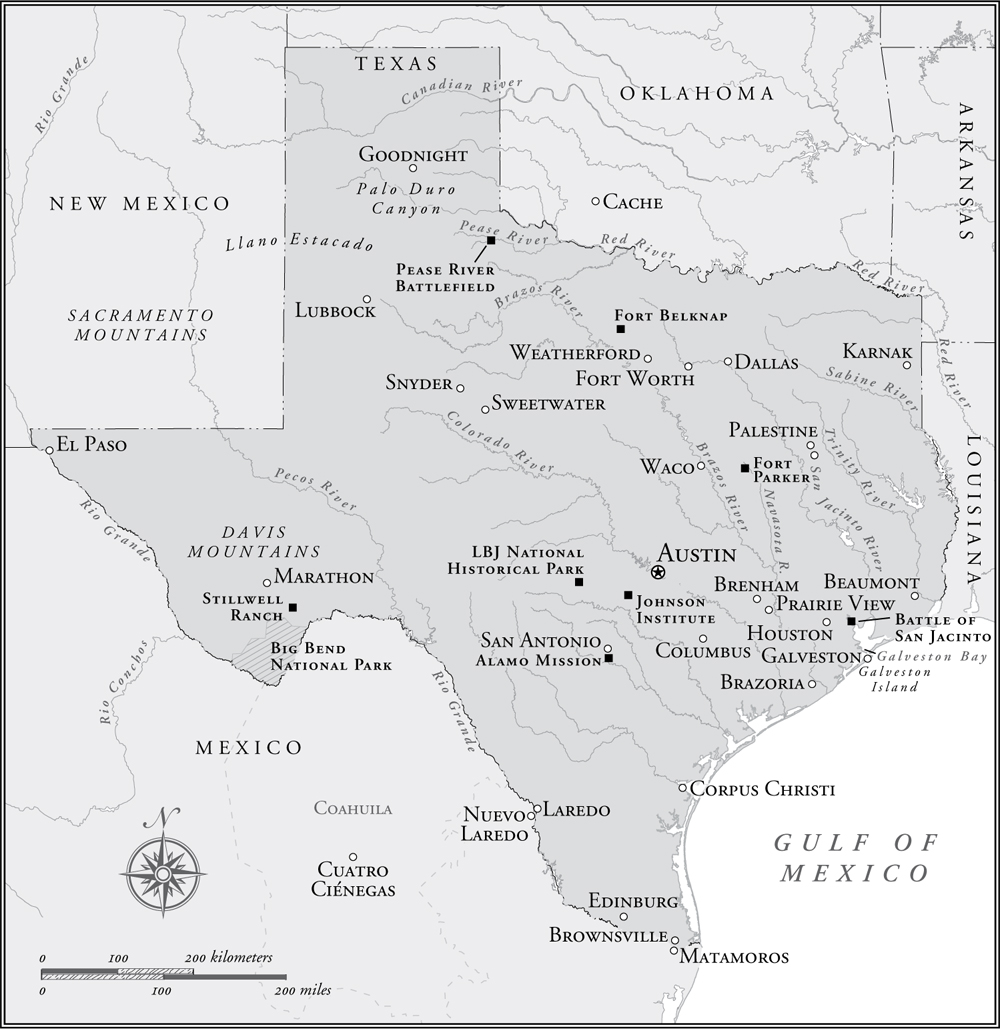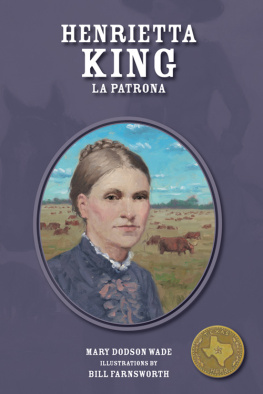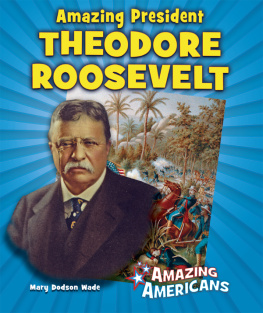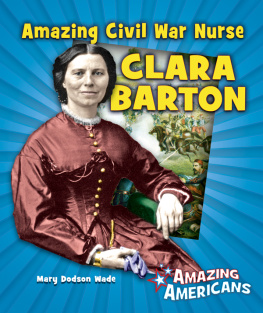
About the Author
Author Mary Dodson Wade lives in Houston, Texas. She spent twenty-five years as an elementary librarian and has published more than fifty books. She maintains membership in the Texas State Historical Association, Western Writers of America, Women Writing the West, the Texas Council for the Social Studies, Society of Childrens Book Writers and Illustrators, and the Texas Library Association.

An imprint of Globe Pequot
Distributed by NATIONAL BOOK NETWORK
Copyright 2018 Mary Dodson Wade
Map by Melissa Baker Rowman & Littlefield
All rights reserved. No part of this book may be reproduced in any form or by any electronic or mechanical means, including information storage and retrieval systems, without written permission from the publisher, except by a reviewer who may quote passages in a review.
British Library Cataloguing in Publication Information available
Library of Congress Cataloging-in-Publication Data available
ISBN 978-1-4930-3196-2 (paperback)
ISBN 978-1-4930-3197-9 (e-book)
 The paper used in this publication meets the minimum requirements of American National Standard for Information SciencesPermanence of Paper for Printed Library Materials, ANSI/NISO Z39.48-1992.
The paper used in this publication meets the minimum requirements of American National Standard for Information SciencesPermanence of Paper for Printed Library Materials, ANSI/NISO Z39.48-1992.
Printed in the United States of America
For Jeanne Dodson, sister-in-law extraordinaire; Jean Everett, West Texas historian, for laughs over facts not being fact; hubby Harold, perpetual proofreader; Melia and Marisa Wade, two girls in Hawaii who are pretty amazing themselves.

Acknowledgments
Researching a project makes authors aware how much they depend on others to help them do their work. This book is no exception. Thanks go to those who helped provide photosLisa Struthers at the San Jacinto Museum of History, Houston; Warren Stricker at the Panhandle Plains Historical Museum, Canyon; Margaret Harman at the LBJ Library, Austin; Terre Heydari at the DeGolyer Library, Southern Methodist University, Dallas; Alston Cobourn at the Jeff and Mary Bell Library, Texas A&M University Corpus Christi, Anne Cook at the Texas Department of Transportation, Austin; and Toms Pantin, Austin photographer.
Special thanks to Laurel Lamb at the Scurry County Museum, Snyder, who took time to resurrect photos during busy exhibit preparation. A delightful visit with Ingrid Grant at the African American Library at the Gregory School helped identify the photo for Barbara Estrada to release from the Houston Public Library Metropolitan Research Center. Teresa Hedgpeth at the US Olympic Committee in Denver, Colorado, worked cheerfully to meet specs. Phyllis Earles at Prairie View A&M dug through archives to locate the needed photo. And what a delight to renew contact again with Guadalupe Quintanilla and her assistant Karina Medina!
Introduction
Texas has an amazing history created by some amazing people. This book details the lives of fifteen women who were participants in that story. All but one of them were born before 1920. The period in which they lived ranges from the first permanent Spanish settlement in colonial Texas to the present. Some come from privileged backgrounds, while others struggled with circumstances. In reading their stories, it is often easy to see how their childhood affected their accomplishments as adults. Some of these women are quite well known, some known only locally, and for a few this is the first time their full story has appeared in a book. Nevertheless, these individuals are all part of the incredible story of Texas.
Mara Gertrudis Prez Cordero Cassiano
17901832
M ara Gertrudis Prez Cordero Cassiano was a woman of independent means. Her family was descended from the Canary Islanders who settled San Antonio, Texas. Her father was wealthy enough to buy the building on the San Antonio plaza that we know today as the Governors Palace, and she inherited his property when he died. She married a Spanish army general and reviewed the troops for him when he was away fighting Apache Indians. When he died, she married a wealthy Italian. Because Spanish women could own and manage property, she handled her own affairs.
Gertrudis Prez was born on January 2, 1790, at the Prez homestead in Villa de San Fernando, the settlement formed with the arrival of Canary Islanders in 1731, forty- five years before the American Revolution. The new settlers named the small community for the heir to the Spanish throne, future king Fernando VI. This first permanent settlement in Texas is known today as San Antonio, one of the ten largest cities in the United States.
A census two years before Gertrudis Prez was born listed three different components for San Antonio de BxarMission San Antonio de Valero, the presidio of San Antonio de Bxar, and the Canary Islanders settlement called Villa de San Fernando.
The mission came first. Spain was aware of the importance of having outposts in territory far distant from Mexico City, but it was usually Catholic missionaries who pushed into unsettled territory first in an effort to bring Christian faith to the native inhabitants. For that reason the Spanish viceroy in Mexico City readily approved the request to move a mission from the Rio Grande area to south-central Texas, ordering soldiers to accompany them. On May 1, 1718, Mission San Antonio de Valero, later known as the Alamo, was founded in present-day San Antonio on the east side of the San Antonio River.
Four days later the presidio was in place on the other side of the river, about a musket shot away. Soldiers stationed there were charged with the responsibility of protecting the mission. Some of them brought their families with them, but the little village where these dependents lived did not qualify as a town.
Thirteen years passed before settlers arrived to start a true town at San Antonio de Bxar. That same year, isolated Mission Los Adaes three hundred miles away in East Texas closed and moved to one of the newly established missions along the San Antonio River south of the town. Three other missions, each serving a different indigenous group, opened at the same time. This string of missions, now San Antonio Missions National Historical Park, includes the Alamo, San Jos, Concepcin, San Juan Capistrano, and Espada. All the missions, except for the Alamo, are still active parish churches. In the beginning, the small contingent of soldiers at the San Antonio presidio was responsible for guarding all these missions.
The settlers who came to establish the new town were from the Canary Islands. They were citizens of Spain. Columbus had stopped at the Canary Islands on his initial voyage to the New World. The name for the group of islands comes from the Spanish word canis (dogs) due to the large number of them found there.
King Philip V had authorized four hundred families from the Canary Islands to settle in the New World. The order was soon suspended, but fifty-six individuals had already sailed for Mexico, and they continued to San Antonio de Bxar, arriving in 1731.
They were listed as being sixteen families, but one family was composed of four young unmarried men. They had permission to organize a town that they called Villa de San Fernando to honor their prince. As incentive to come to this distant place, they were granted property and given the nobility rank of hidalgo , allowing them to use the titles Don and Doa.
Next page














 The paper used in this publication meets the minimum requirements of American National Standard for Information SciencesPermanence of Paper for Printed Library Materials, ANSI/NISO Z39.48-1992.
The paper used in this publication meets the minimum requirements of American National Standard for Information SciencesPermanence of Paper for Printed Library Materials, ANSI/NISO Z39.48-1992.